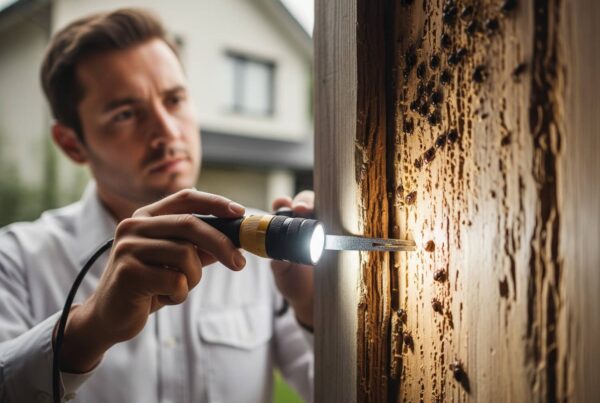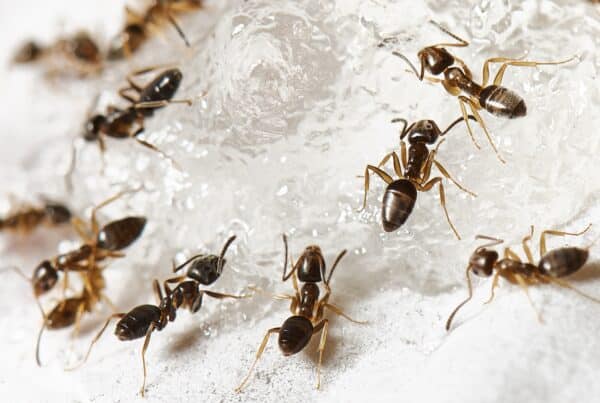
As a homeowner, keeping your house free from pests is crucial. Bug screens are an often-overlooked yet essential feature that can help protect your home from unwanted insects and keep it more comfortable. During home inspections, a bug screen is one of the first things we check, as an entry point designed to keep your home safe and pest-free.
In this guide, we’ll discuss the importance of a bug screen, common issues found during inspections, and how to maintain them effectively.
What Are Bug Screens?
Bug screens are simple yet effective tools that help prevent insects from entering your home. These screens are typically made from durable mesh material that can be installed in windows, doors, and vents. Their purpose is to allow airflow while blocking insects such as mosquitoes, flies, and other pests.
Without one, your home could quickly become a haven for bugs, especially during the warmer months. Bug screens come in a variety of options:
- Window Screens: Installed on windows, these screens allow fresh air to circulate without inviting bugs indoors. They help maintain natural ventilation while keeping pesky insects outside.
- Door Screens: Often used on exterior doors, door screens can be either fixed or retractable. They are ideal for keeping bugs out while still allowing easy access when you need it.
- Vent Screens: Ventilation systems often come with built-in bug screens that prevent pests from entering your attic or crawlspace through vents, which are commonly overlooked areas that could let in insects.
Why a Bug Screen is Essential

Bug screens provide multiple benefits for homeowners. Here are the top reasons why they are essential for your home:
- Protection Against Pests: A bug screen is your first line of defense against annoying and sometimes dangerous pests like mosquitoes, flies, and spiders. A lack of bug screens can lead to an infestation that is both difficult and costly to deal with.
- Prevent Allergens: Bug screens help keep allergens such as pollen, dust, and mold spores from entering your home, making it more comfortable for people with allergies. This can significantly improve air quality, especially during pollen-heavy seasons.
- Enhanced Airflow: With bug screens in place, you can enjoy fresh air without opening your windows wide and letting insects inside. This is particularly valuable during transitional seasons when you don’t want to rely on air conditioning but still want to get a fresh breeze.
- Protection for Pets: Pets, particularly those with access to windows or doors, are often at risk of being bitten by insects. Bug screens provide an extra layer of protection for your furry friends by keeping harmful bugs out.
A small investment in a bug screen can lead to a big payoff when it comes to improving your home’s overall comfort and safety.
How a Bug Screen Can Impact Your Home’s Energy Efficiency
Did you know bug screens can help reduce your energy bills? During warmer months, when the temperature is just right, you can open your windows to let in a breeze. However, without bug screens, you’d be inviting pests into your home. With bug screens, you can enjoy fresh air and reduce your dependence on air conditioning. By minimizing the need to run your HVAC system, you’ll not only save on your energy bill but also improve your home’s overall comfort.
In addition, allowing natural airflow with bug screens can keep your home cooler in the summer and reduce the buildup of heat indoors. This provides an energy-efficient alternative to constantly running your air conditioning.
Common Problems Found During Home Inspections
When home inspectors assess bug screens during an inspection, we often find several common issues. These problems can lead to reduced effectiveness and, in some cases, could even allow pests to sneak in. Here are the most common issues we encounter:
- Torn or Ripped Screens: Over time, bug screens can develop tears or rips, especially if they’re exposed to extreme weather conditions or rough handling. These openings can let insects through. It’s crucial to inspect your screens regularly for any damage to avoid insect intrusions.
- Poorly Installed Screens: Sometimes, bug screens are not properly installed. This can happen if the screens don’t fit the frame correctly, leaving gaps for pests to enter. A poorly installed screen is as good as having no screen at all.
- Misshaped Screens: If the screen has warped or become misshaped, it won’t fit the window or door properly, allowing small bugs to squeeze through. Warped screens can be especially problematic if they’ve been exposed to moisture or sun over an extended period.
- Build-up of Mold and Mildew: In areas with high humidity, mold and mildew can build up on bug screens, making them look dirty and potentially less effective. If you notice any discoloration or odors, it’s important to clean your screens to prevent further damage.
These are all important aspects to consider when maintaining bug screens in your home. As a homeowner, regular inspection and maintenance can help you avoid these common issues and ensure that your bug screen is always working properly.
How to Maintain and Care for a Bug Screen

Maintaining your bug screens is easy and can save you money in the long run. Follow these simple tips to keep your screens in top shape:
- Clean Your Screens Regularly: Dust, dirt, and debris can accumulate on your bug screens, blocking airflow and making them look unappealing. Use a vacuum cleaner with a soft brush attachment or gently wash the screens with mild soap and water. Regular cleaning helps prevent buildup that could compromise the screen’s functionality.
- Inspect Screens for Damage: At least once a year, inspect your bug screens for any rips, tears, or warping. Check that they fit the window or door frame snugly. If you find any damage, replace the screen immediately. This is a key part of your regular home maintenance routine.
- Replace Old Screens: Bug screens don’t last forever. Over time, they may become brittle or lose their effectiveness. If your screens are old or frequently damaged, it may be time to replace them with new ones to maintain protection against pests.
- Ensure Proper Installation: If your screens are not properly installed, they won’t do their job. Make sure they fit securely in the frame, with no gaps that could let insects through. Proper installation will also prolong the life of your screens.
Regular maintenance of your bug screens will help keep your home safe from pests, improve airflow, and enhance your overall energy efficiency.
How a Home Inspector Can Help
During a home inspection, bug screens are just one of many factors that inspectors check. We inspect each screen for damage, proper fit, and functionality. If we find any issues, we’ll provide you with recommendations on how to fix or replace them.
As a homeowner, it’s important to check your bug screens periodically. If you’re unsure about the condition of your screens, a professional home inspection can give you peace of mind. We’ll let you know if there’s any need for maintenance or replacement.
Conclusion
In conclusion, bug screens are a vital component of home protection. They keep pests out, improve airflow, and can even save on energy costs. Regular maintenance is crucial to ensure they’re always functioning properly. If you’re unsure about the condition of your bug screens or need help with a home inspection, contact us today. Our team of professional inspectors can help you identify any issues and provide expert advice on maintaining a pest-free home.
Whether you need a routine inspection or assistance with your bug screens, we’re here to help. Reach out now to schedule your home inspection and keep your home in top condition!



